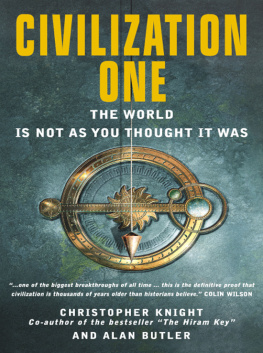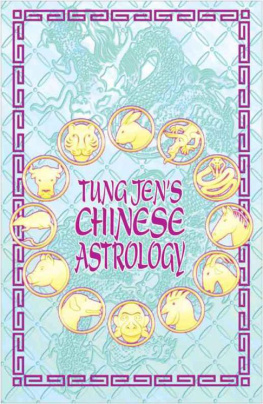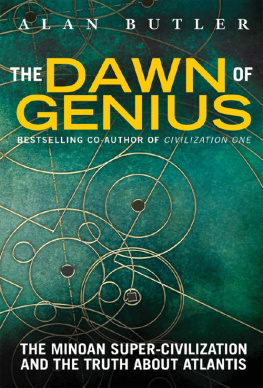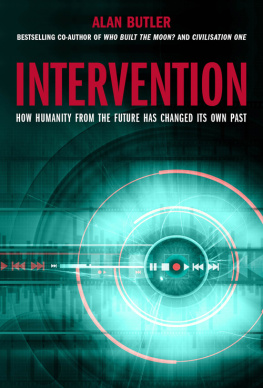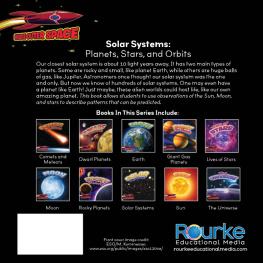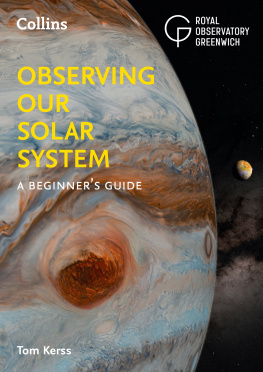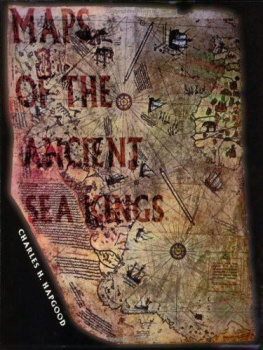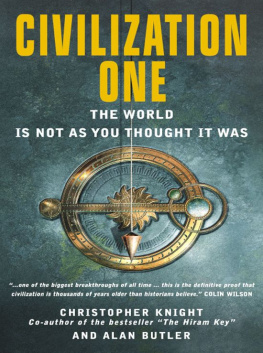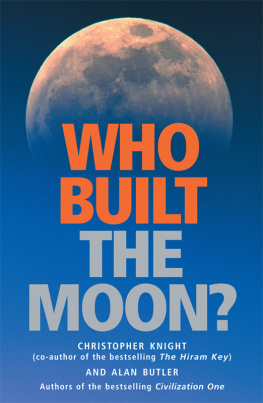Civilization One
Previous books by Christopher Knight
(coauthored with Robert Lomas)
The Hiram Key The
Second Messiah
Uriel's machine
The Book of Hiram
Previous books by Alan Butler
The Bronze Age Computer Disc
The Warriors and the Bankers
The Templar Continuum
The Goddess, the Grail and the Lodge
Christopher Knight has worked in advertising and marketing for over thirty years, specializing in consumer psychology and market research.
His writing career began almost by accident after he had invested seven years conducting research into the origins of Freemasonic rituals and he has written four books to date, co-authored with Robert Lomas. His first book, The Hiram Key was published in 1996 and it immediately went into the UK top ten, best-seller list and remained in the chart for eight consecutive weeks. It has since been translated into 37 languages and sold over a million copies worldwide, becoming a best seller in several countries. He now divides his time between marketing consultancy and historical research for writing books.
Alan Butler qualified as an engineer, but was always fascinated by history, and made himself into something of an expert in astrology and astronomy. Since 1990, he has been researching ancient cultures, pagan beliefs and comparative religion and has published four successful books on such topics as the Knights Templar and the Grail legend. He is also a published playwright and a very successful radio dramatist.
CIVILIZATION
ONE
THE WORLD IS NOT
AS YOU THOUGHT IT WAS
Christopher Knight
and Alan Butler

Contents
P LATES
The publisher would like to thank the following people, museums and photographic libraries for permission to reproduce their material. Every care has been taken to trace copyright holders. However, if we have omitted anyone we apologize and will, if informed, make corrections to any future edition.
Plate 1 The Ring of Brodgar, Orkney, Scotland Sue Anderson
Plate 2 Stonehenge on Salisbury Plain, England Alan Butler
Plate 3 The observatory at Newgrange, Ireland Kate Butler
Plate 4 A clay pendulum Alan Butler
Plate 5 A Megalithic bowl Alan Butler
Plate 6 A cube of water Alan Butler
Plate 7 A cube of barley Alan Butler
Plate 8 A pint cube in clay Alan Butler
Plate 9 The statue of King Gudea, ruler of the city state, Lagash (c 20502000 BC ) The Iraq Museum, Baghdad / Scala, Florence
Plate 10 A barley cubit Alan Butler
Plate 11 A barley inch Alan Butler
Plate 12 Modern measurement of a barley seed Alan Butler
Plate 13 The ruins of the Minoan Palace of Knossos, Crete Alan Butler
Plate 14 Thomas Jefferson (17431826) painted by Rembrandt, The White House Historical Association
Plate 15 Jeffersons rod
Plate 16 The Phaistos Disc
Plate 17 The Earth photodisc
Plate 18 The Moon photodisc
Plate 19 The Sun photodisc
Plate 20 A solar eclipse photodisc
Plate 21 The planet Venus photodisc
Plate 22 Chart of the Relationship between Music and Visible Light Alan Butler
D EDICATIONS
For my grandchildren Sam, Isabelle and Max (plus others yet to arrive). May your childhood wonder and questioning stay with you for life.
CK
For my Father, John Butler, and in memory of my Mother Mary.
AB
A CD of Megalithic music has been composed and performed by De Lorean to accompany this book. Samples of Civilization One The Album can be heard and copies bought at www.civilizationone.com.
A CKNOWLEDGEMENTS
Kate Butler, for her invaluable help with the index.
Fred Cameron, for his important comments regarding the Sumerians.
Fiona Spencer-Thomas, for efforts above and beyond the call of duty.
Michael Mann, whose close cooperation and advice was essential to this book.
Penny Stopa and the Editorial team.
Tony Crerar, for his welcome contributions.
Hilary Newbigin, for her most welcome advice.
Peter Harwood, our technical expert.
Introduction
The super-culture
Was there a super-advanced culture in prehistory? If not, how can it be that the supposedly unsophisticated people of Stone Age Britain possessed a fully-integrated system of measurement based on a deep understanding of the solar system?
The history of human development from hunter-gatherer to city dwellers once seemed comfortable and predictable. All of the available evidence supported the accepted picture of a smooth social evolution largely driven by the ingenuity of people living in the Middle East. But then, over several decades, an eminent professor of engineering, Alexander Thom, annoyed the world of archaeology by making a startling claim. He maintained that he had found that the structures left by late Stone Age man had been built using a standard unit of measure that was so precise that he could identify its central value to an accuracy that was less than the width of a human hair. The idea that these simple people from prehistory could have achieved such accuracy flew in the face of all the worldview of most archaeologists. Not surprisingly, Thoms findings were almost universally dismissed as some kind of mistake.
Professor Thom called his discovered unit the Megalithic Yard, but he died (in 1985) without ever being able to explain why people from the Neolithic Period, or late Stone Age, circa 3500 BC might have been motivated to establish such a measure or how they could have consistently reproduced such incredible accuracy.
Even today there are many tens of thousands of these Megalithic stone structures strewn across the British Isles and the western fringes of Europe. Our initial quest was simple: we wanted to find out if Thom really had found a prehistoric measure or if he had been deluded by the huge amount of data he collected from his surveying of sites from the islands of northern Scotland down to Brittany on the west coast of France. We reasoned that if Thoms Megalithic Yard was imaginary, it should be a meaningless value, but if it was indeed a genuine Neolithic measure, it should have some physical reality behind it and some kind of scientific means of reproduction.
The consequences of knowledge
Our investigation led us to a rediscovery of the science behind this prehistoric unit: we can now demonstrate both its mathematical origin and its means of reproduction, using the mass and spin of the Earth. In identifying the precise origin of Thoms Megalithic Yard, however, we soon found that we had nudged open the door of a virtual treasure chest of lost knowledge.
Our approach has been to apply forensic techniques to archaeology across a span of cultures from prehistory (before 3000 BC ) and the earliest times of written history (after 3000 BC ). We have found that there is a completely identifiable DNA associated with the oldest and purest system of science that appears in the most unexpected places. Even units of measure that are believed to be relatively modern, from the pound and the pint to the gram and the litre, turn out to be thousands of years old and linked to the very dimensions of the solar system.
We have tried to keep our story as short and as clear as possible. A basic knowledge of arithmetic is all that is required to follow our investigation in detail, so please have your calculator to hand if you wish to check our findings step by step. Additional information, frequently asked questions and new developments are available on our website: www.civilizationone.com.

